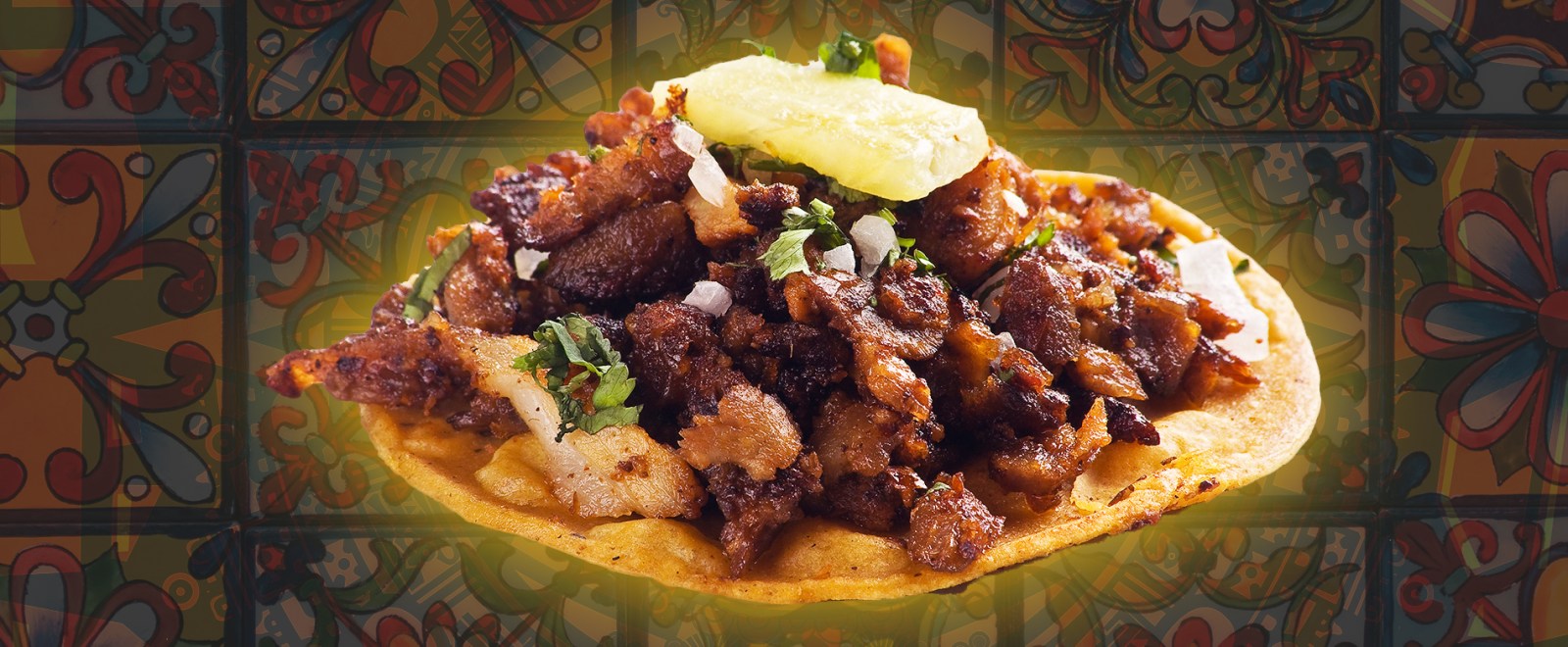“It’s interesting because in Mexico we all eat corn,” Gustavo Arellano tells me, his voice brimming with enthusiasm. “That’s the foundation of our cuisines. The taco comes from tortillas. Tortillas come from corn. And the corn comes from us.”
Arellano is a taco master and the author of the acclaimed book Taco USA. When I reached out to him to talk about his favorite topic, I knew our conversation would start with maize, or “corn” as it’s colonially known. As Arellano notes, corn is at the root of what we know as “Mexican food.” But with pre-colonial foods entering the mainstream culinary conversation — thanks in part to shows like Chef’s Table and David Chang’s Ugly Delicious — it’s grown clear that corn and the cultures that relied on it weren’t governed by imaginary borderlines until quite recently.
Meaning that corn, the taco’s building block, is Mexican but not only Mexican. It’s Indigenous across the Americas.
“Most people just don’t think about the immensity of the Indigenous agriculture that was happening before colonization,” says two-time James Beard award-winner Chef Sean Sherman, of The Sioux Chef group. “The history of corn can be traced to huge advancements in how Indigenous people were living sustainably and it offers a lot of clues to the past.”
I should back up a little. My own desire to understand the expansive, inclusive history of the taco began with a simple Google search. I’d typed in “American Food” while looking for a photo and the only three items that came up were hamburgers, hot dogs, and pizza. To me, an Indigenous person from the Pacific Northwest, the fact that pre-colonial foods like the taco were missing felt glaring. I know through growing up around Indigenous communities how important corn was/is for Indigenous cultures from the tip of South America to the tundras of Canada. Yet the corn tortilla somehow isn’t American?
In this era of kids in cages and arguments over who is and isn’t an “immigrant” to this land, unpacking this omission feels like a chance to discuss the idea of borderlines in general. The border between the U.S. and Mexico or even the U.S. and Canada or Mexico and Guatemala are all extremely recent inventions by settler-colonists. California, Arizona, New Mexico, Utah, Nevada, Texas, and parts of what is Colorado, Wyoming, Kansas, and Oklahoma used to be colonial Mexico, remember, and not particularly long ago. A border was put in place on paper only after the Treaty of Guadalupe Hidalgo was signed in 1848, ending the Mexican-American war. Still, there weren’t any border checkpoints on roads until the United States Immigration Act of 1891 implemented them on the southern and northern borders of the U.S.
All of that is before you even get to the fact that the Indigenous people on either side of that modern (and very) made-up line were often from the same communities and cultures with shared histories, languages, and cuisines. The idea that something as crucial as the taco stopped belonging to one group of people and became only someone else’s because some colonialists drew an imaginary line is a tough pill to swallow. It shows how narrow our thinking about food (and the world) can be. Especially when you consider that people have been living in these lands for well over 50,000 years, according to the current archaeological record.
Tracing the story of this single, iconic item offers an entry point to the resurgent conversation of Indigenous food, highlights the absurdity of asking food to follow inked lines on maps, and champions the taco as the ultimate “fusion dish.” Not to mention motivating you to expand your thinking around something we all feel like we know.
The Foundation — MAIZE
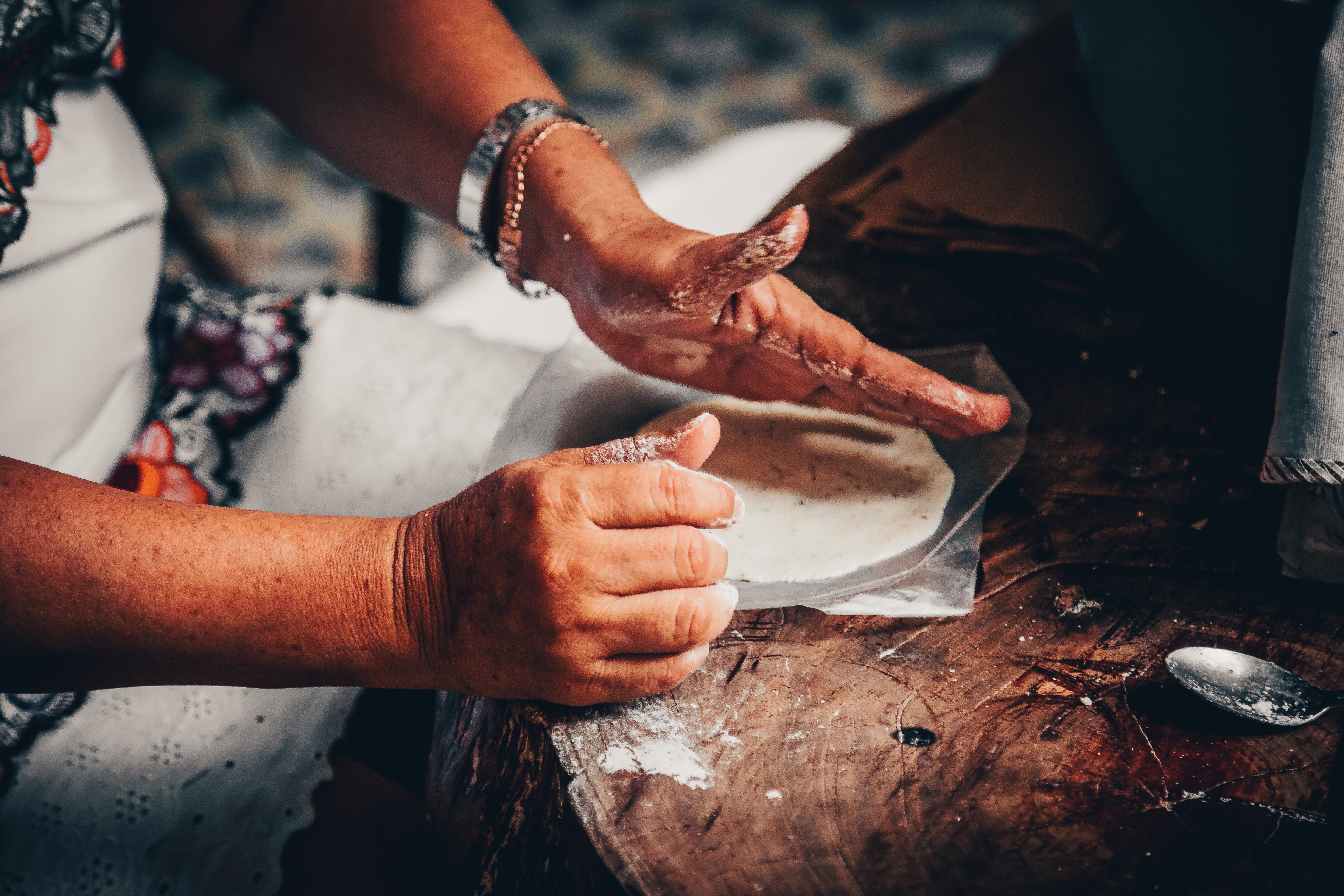
A quick note on the name: Maize is the Spanish interpretation of the Taíno word “mahiz.” Corn is a European term for cereal grains. When Anglo-Saxons arrived in North America, they often called maize “Indian Corn” meaning it was an Indian cereal grain. That was eventually shortened to “corn” in most of North America. That’s confusing given that “corn” and “korn” still mean cereal grains in most of the rest of the world with most languages using their corruption of the word “maize” to describe the product we call corn.
“The history of Indigenous corn is so overlooked,” Sean Sherman explains. “When you look at the diversity stemming from its origins in southern Mexico and shooting into South America, through the Caribbean, the entire East Coast, crawling up the Mississippi River Valley, it’s truly incredible, and there’s such a rich variation in the amount of corn diversity that’s still out there.”
Corn’s origins, according to the current archaeological record, shows the domestication of the plant taking place over 8,700 years ago in Mexico’s Central Balsas River Valley, not far from present-day Mexico City. Within a handful of centuries, the agricultural product had spread throughout North and South America as a cornerstone crop.
The next step on the road from kernels of corn to the taco’s tortilla was nixtamalization. This ancient process is what turns raw corn into masa, or flour, for making everything from sofkey, the Cherokee precursor to grits, to cornbread, tamales, and, of course, the corn tortilla.
The process is fairly ingenious in its simplicity. Raw maize is cooked in an alkaline water solution (usually wood ash or limewater). Chef Sherman notes that the type of ash used in this process would vary between cultures with communities in the Southwest using Juniper ash compared to the Lakota using the ash from Ash trees and so on.
Whatever the ash used, this process amps up the nutritional value of the maize along with increasing aroma and taste while lowering mycotoxins. The soaking also breaks down the hemicellulose that binds the kernel together, making it easier to hull and then grind into a flour. This process has been in practice for at least 4,000 years according to the current archaeological records but likely much longer.
“Everyone who was growing corn was nixtamalizing it,” Sherman explains, “from the bottom of South America to deep into Canada.”
It’s worth noting that “nixtamalization” is a Spanish corruption of a Nahuatl term from the Aztecs. There’s plenty of evidence of this process being used throughout North and South American communities with different cultures using different names for the process. A lot of those words (and cultures) are lost to us and so nixtamalization has become the universal term.
Finally, all of this is necessary to arrive at the “tlaxcalli” — that’s the actual Nahuatl term the Aztecs used for maize flatbread — literally, “something baked.” The term tortilla is a Spanish word meaning “little cake.” And while the tlaxcalli was certainly derived millennia ago in the Central Valleys of what is now Mexico, the spread of flatbreads was an almost universal commodity. They were a staple of Aztec and Mayan diets for literal millennia, often served at home with mole and chili salsa. You could also find them in cities across the Mesoamerican world filled with turkey, fish, eggs, beans, squash, and a long list of fruit sauces. There were sweet versions alongside the savory. There were yellow, white, blue, red, orange tlaxcalli depending on the city you were in and their culture’s use of specific varieties of maize.
All of this is to say, by the time the Spanish showed up, tacos (or food served with a maize-based bread) were a cornerstone of cuisines throughout both Americas. When looking at the history of maize, nixtamalization, and the near-universal use of the product across two continents, it’s hard not to see maize and it’s by-products as a fundamental pan-American food.
The Filling — PROTEINS
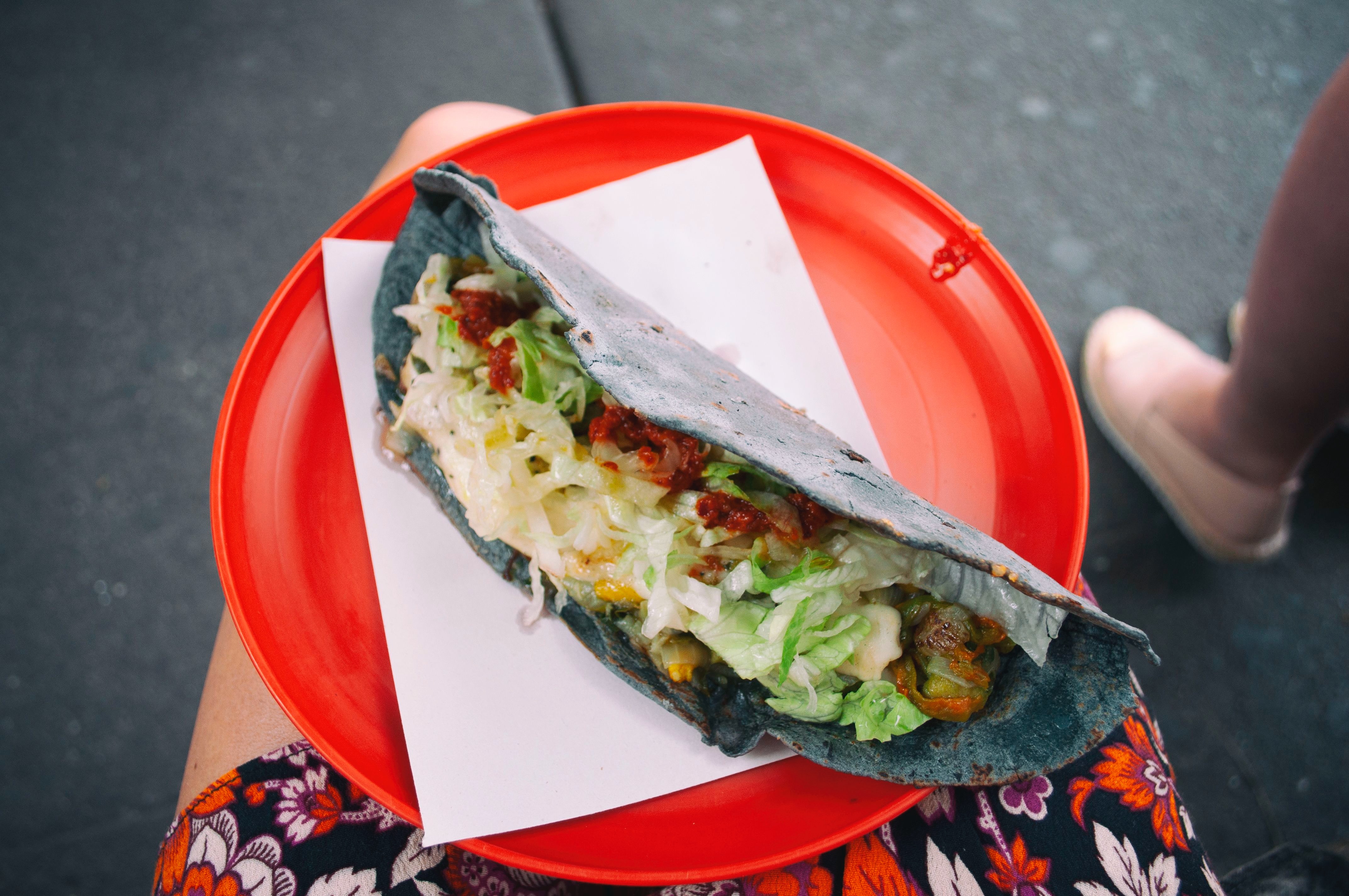
An investigation into the proteins that fill the average taco in 2019 is where a fracture between the pre-Hispanic version of the food and the modern one becomes evident. These days, pork, chicken, and beef are almost universal when talking tacos. Fish makes an appearance in coastal versions and some cultures living near large freshwater sources, but even those come nowhere near the dominance of the traditionally European meats.
Before Europeans showed up, tacos were filled with turkey, eggs, venison, bison, eggs, squash, beans, goat, beaver, and more. Today, you’d be hard-pressed to find a taco filled with turkey or bison. Want a venison taco? Forget it.
“Unfortunately, you only see wild foods on the fringes,” Arellano tells me. “It’s so suburbanized now and most taco chefs get their taco meat from Sysco, which is a damn shame. Places don’t have a lot of wild game and don’t really have a hunting tradition anymore.”
As colonial overloads moved into the Americas, they brought their farm animals with them and, often, forced those animals into the local agriculture. Slowly, venison was replaced with beef. Wild turkey with chicken. Bison with pork. The base element stayed the same but the filling was suddenly foreign and remains so to this day, creating one of the first true European-American fusion foods. Almost every modern version of a taco you’ll find in high-end restaurants or mom-and-pop food trucks from Copenhagen to Chicago to Mexico City will use Eurasian proteins. Beef, pork, chicken, chorizo, and al pastor all hail from European and West Asian cultures and techniques. So while the taco is distinctly Mexican and Indigenous, the colonialist imprint on it can’t be denied either.
What’s interesting here is how wild foods and even domesticated turkey has been almost completely exorcised from the current taco culture. This, of course, is an outcome of genocide over the course of hundreds of years of European-led colonialization that was then carried on by current colonial governments that run places like the United States, Mexico, Brazil, Argentina, and so on. Bison, venison, wildfowl, and wild seafood were replaced with European farm animals as colonial culture crushed Indigenous culture.
When it comes to the taco itself, this isn’t really a matter of what’s better or worse, flavor-wise. It’s a matter of history moving into new eras with new realities. It’s evidence of the fact that while we try to wrestle with the murky notion of “food appropriation”, food has always been in flux, drawing from new influences. It’s a reminder that the story of food is a story of change.
As the proteins that filled tacos shifted further and further from their wild protein roots in the 1800s, borders were suddenly going up, splitting families on either side of made-up lines. After the Mexican-American War, the United States carried out its first ethnic cleansing of “Spanish Indians” and patriated them to Mexico. The Greaser Act of 1850 (yes, it was called that) was a dark chapter that fueled the California Genocide. Indigenous people who were already culturally associated with the Spanish Catholic tradition were sent to live in places they’d never before set foot in. Indigenous people who weren’t previously integrated into Spanish colonial rule were simply worked to death as slaves in service of the Gold Rush. This, of course, changed what people ate in the parts of the continent that were suddenly part of the United States of America.
That was not the only time the United States ethnically cleansed Spanish speaking people from the U.S. though. The Mexican Repatriation between 1929 and 1936 saw up to 2,000,000 people moved out of the United States. 60 percent were naturally born U.S. citizens of “Spanish Indian” and “Mexican” heritage. They were removed to Mexico, again to towns and cities that they’d never before laid eyes on. An unknown number perished along the way or when they arrived.
This happened again when the U.S. implemented Operation Wetback (yes, it was officially called that) in 1954. The first year saw over one million people removed to Mexico. While the program was targeted at “illegal” laborers coming into the United States and strengthing the southern border, cities and states used the operation as another excuse to ethnically cleanse cities like Chicago, San Francisco, and Los Angeles of “Mexican” descended citizens of the United States. The property (and bank accounts) of these Americans was often seized and they were deported without having the ability to contact their families. This was famously the instrument of destruction used to annex the Chavez Ravine neighborhood of Los Angeles, which allowed the building of Dodger Stadium. This program lasted until 1986 and basically created the modern border between the United States and Mexico that we know today.
Between 1850 and 1960, huge swaths of the demographic in the United States shifted and it shifted people’s perceptions of food along with it. For an American from the United States, the taco became something from “south of the border.” At the same time, the industrialization of agriculture completely cut off Indigenous foodways across the continent and replaced wild and whole foods with colonial, industrialized products. All of this is to say, that 100 years of multiple ethnic cleansings of people that the United States considered “Mexican” or “Spanish Indians” lead to a shift in perception that informs how we see “Mexican” food to this day.
“When you’re looking at the map of Indigenous North America, we don’t look at the colonial lines,” Sean Sherman explains. “We don’t say, ‘This is Mexico… This is Canada … This is the U.S.,’ or even try to sort who’s speaking Spanish or English or French, since those are all colonial languages and colonial borders. We just look at the natural flow of these Indigenous cultures. You can look at Mexico and look northward. You can see how it all flows together. And all of these colonial lines crossed over those people.”
The Salsas — TOMATOES, CHILIS, AVOCADO
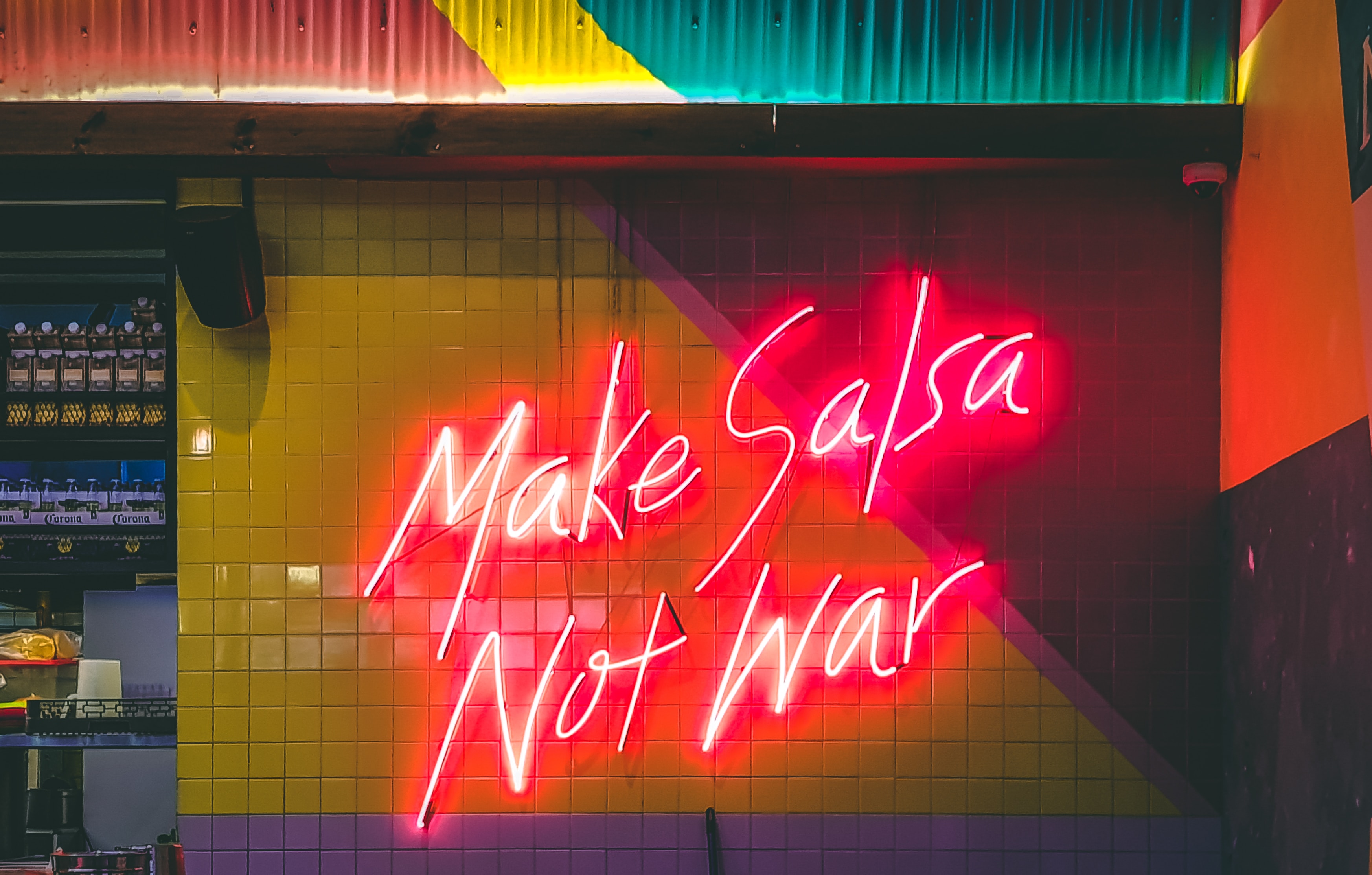
Even after this era of destruction and colonization, the taco wasn’t completely changed. There remained a hugely important component to any great taco that squarely hinged on Indigenous American ingredients: Salsa. Tomatoes, chilis, avocado, onions, citrus, and local herbs are all old school cornerstones of ancient Indigenous agriculture. The base elements of avocado (a fruit first domesticated in what’s now Central Mexico), tomatoes (which grew wild for millennia throughout North and South America before domestication), and chilis (the oldest known cultivated crop in the Americas) are the foundation of millions of beloved salsa expressions.
These days, salsas are so important to the modern taco experience that Gustavo Arellano peeks at them before ordering every time he enters a taco joint.
“You don’t want a place that just has a red and green salsa and maybe a third one,” he says. “No. You want someplace that has like four or five salsas. They need to have the avocado Southern salsa. They should have the super bright orange one! You need to be able to see the knife skills of the chef in how they dice the chilis and onions.”
As mentioned above, dipping a tortilla in a mole or chili sauce was how people have been eating corn tortillas for thousands of years. Those sauces haven’t changed too drastically, even with colonialization. In sense, those salsas are gateways to the past in the same way a corn tortilla is. They’re like time machines that help us return to something deeply comforting from a pre-border patrol, pre-border era.
Salsa, along with the old school base of a corn-based flatbread, is what makes taco pan-American in nature, dating back ten thousand years. Replace beef tongue with bison tongue or pork chorizo with venison sausage and you’ll have a product that represents American cuisine at its pre-Columbian finest.
The Future — TACOS FOR ALL
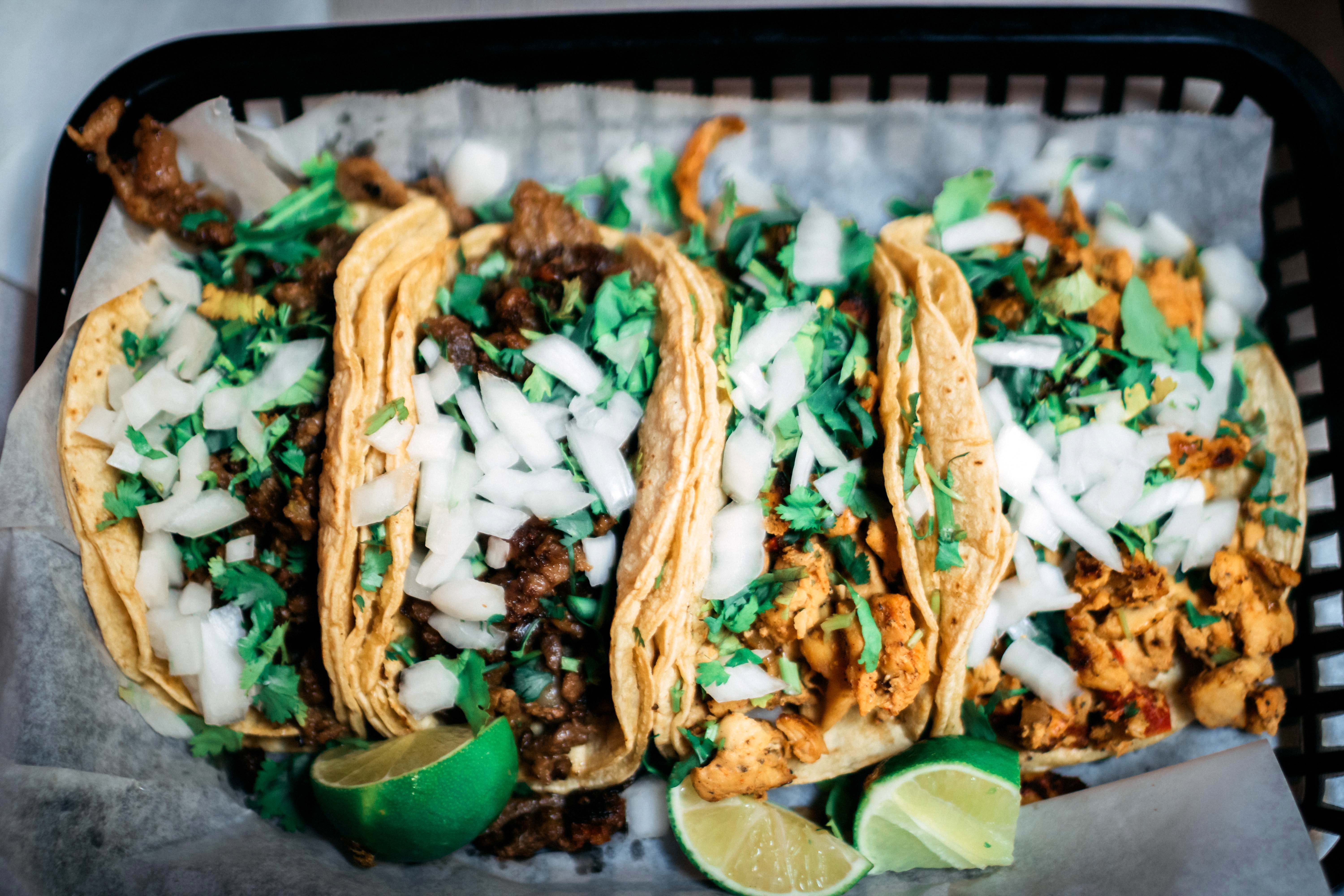
So is calling the modern taco “Mexican” accurate? Or is it uniquely “American” in the way we consider hot dogs (originally from Germany), hamburgers (same), or pizza (Italy) to be?
The fact is, the dish is a blending of colonial Mexican traditions from migrants and colonizers alongside Indigenous foodways. And maybe that’s what modern Mexico is. Still, at this point tacos are unique to whichever region they’re from and whichever culture is cooking them — even post-colonization. Mexican food — Indigenous or colonial — is not a monolith after all (no foodway is).
Is the tri-tip taco being made in Fresno, California not Mexican or Mexican-American? The beef came to America from the Europeans and California is no longer under Mexican colonial rule but the historic influences clearly include Mexican influence. What about the taco Sean Sherman is making in Minnesota from locally grown, heritage corn and wild bison, fruits, and herbs. Is that not a taco because Minnesota was never even part of Mexico? Or is his taco more authentic because it subverts the influence of the European genocide?
The brilliance of the taco is that has never been a single thing from a single culture. The dish has always been adaptable and always will be. You have to look no further than chef Roy Choi and Kogi Korean BBQ. The Korean-American chef revolutionized the taco by bringing Korean ingredients to play. Korean sauces and textures were blended with modern Cali-Mex tacos, starting a whole new genre of fusion. In doing so, he proved the taco is both no one’s and everyone’s.
Chef Sherman may be heavily influenced by his own Indigenous history, but he’s also keenly interested in helping the taco tradition keep growing and expanding.
“We’re not trying to recreate recipes from the past,” he tells me. “We’re trying to understand as much of the food, the flavors, and the pantry items and use our modern creativity to create a bunch of new dishes and, therefore, evolve cuisine. It’s a lot of fun in places that have agriculture where we can play with different corns, beans, squash, and seeds. Then there’s an endless amount of proteins to work into new recipes. I think there’s going to be an incredible amount of creativity as these conversations continue.”
Tacos are the embodiment of the foods of the Americas. They transcend any arguments about who does and doesn’t get to interpret them. The proteins being used by-and-large are from a Eurasian influence. Yet there remains a pan-American backbone to the taco that somehow outlasted both genocide and ethnic cleansing over multiple centuries. A lot of Indigenous American foods didn’t survive that carnage.
Like Sherman, Arellano is excited to see where the taco goes next. He cites the Mexican-American chefs taking back their heritage and bringing Alta-California foodways back to the mainstream in California.
So yes, tacos are Mexican. They’re also Sonoran, Oaxacan, Baja-Californian, Alta-Californian, Tex-Mex, Navajo, Lebanese-American, Korean-American, Lakotan, New Mexican, Hopi, Pueblan, and whatever else you want them to be. But, most of all, tacos are the one true food of the Americas and they lack any border, especially the recently made-up, colonial ones. As such, they offer a template for not just the permutability of food but also a broadening idea of what it means to be “from” a certain place.
Before I get off the phone with Arellano, I ask him how he tells people the sprawling, often confusing, sometimes messy story of the taco.
“I just tell them the full story unapologetically,” he says. “If people don’t want to listen to me, well … they’re missing out and they’re missing out on some of the best food out there.”

